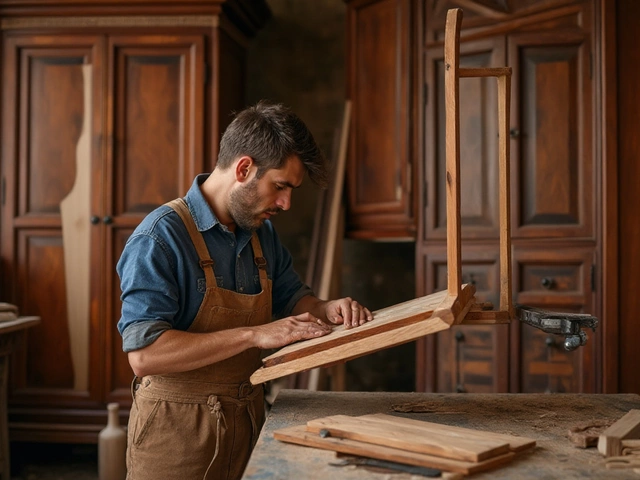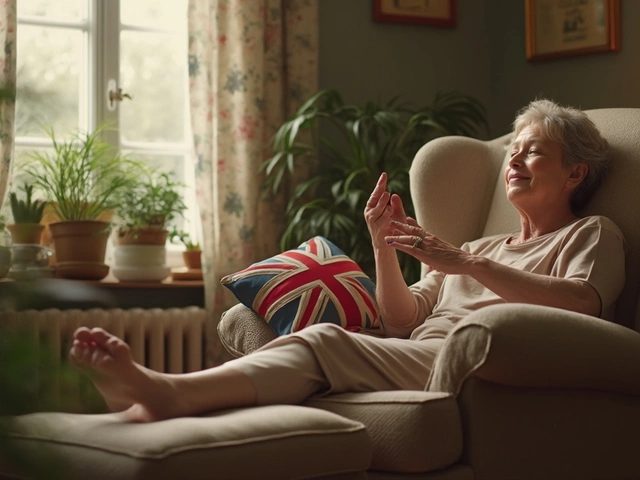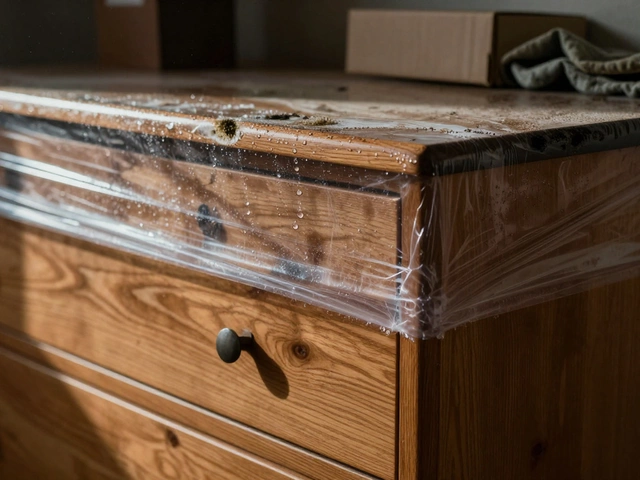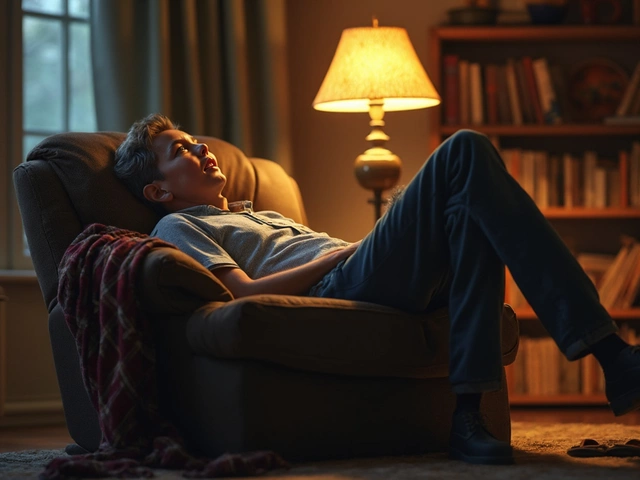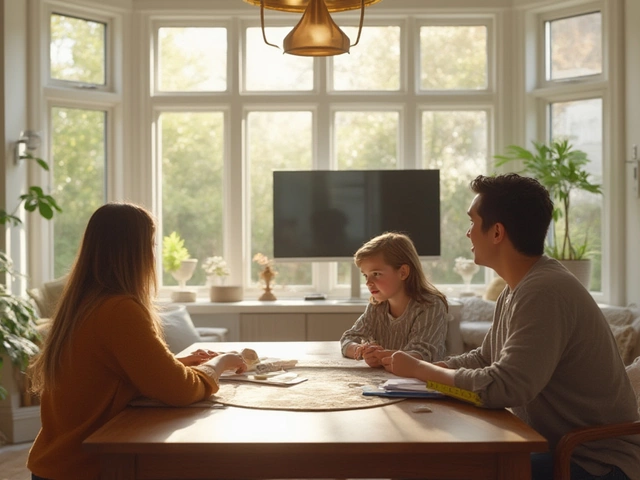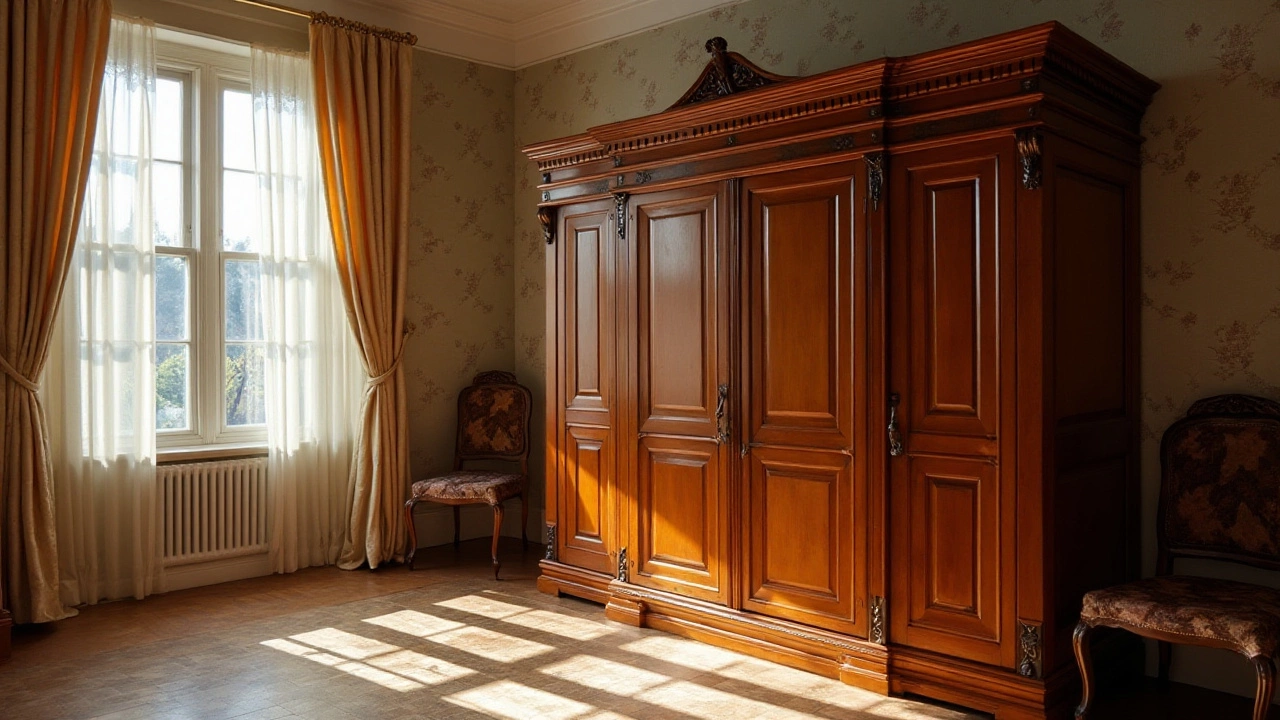 3
Jan,2025
3
Jan,2025
Wardrobes and closets—two terms often used interchangeably in many households. Yet, these pieces of furniture and architectural features hold their own specialties and serve unique purposes that cater to different needs. Knowing the difference between them can enhance how space is utilized in your home.
Wardrobes are standalone pieces, versatile in form and readily adaptable to the evolving interiors. They bring with them a rich history, having been the quintessential clothing storage for centuries. Contrarily, closets are built into the architecture of the home. This makes them seem like a permanent fixture, seamlessly blending into the walls and providing ample storage without occupying too much visual space in a room.
Understanding the detailed distinctions between these two will help homeowners make informed choices about what suits their needs best, ensuring efficiency and style in home design. Whether you are coping with precious little space or indulging in luxury, the right choice can change how you engage with your living environment.
- Defining Wardrobes and Closets
- Historical Evolution
- Functional Differences
- Design and Style Considerations
- Choosing the Right Option for Your Home
Defining Wardrobes and Closets
Understanding the fundamental differences between wardrobes and closets can enhance not just our living space but our appreciation for the history and utility behind these functional pieces. A wardrobe, traditionally known as an armoire, is a standalone piece of furniture that can be moved and adjusted throughout your home as needed. It's often crafted from wood, sometimes boasting intricate carvings or designs that elevate its stature as both a storage solution and a decorative piece. The freedom to position a wardrobe makes it a versatile option, especially in houses or apartments where built-in closets are absent.
Closets, on the other hand, are an American invention that emerged in the 20th century alongside the growth of suburban housing, characterized by its built-in nature—becoming part of a room's architecture. This innovation was fueled by the desire for uniform, clean-lined interiors that maximized floor space in smaller homes. Closets offer significant advantages through their often concealed nature behind doors, contributing to a streamlined interior look. They can range from tiny cubicles tucked in unused corners to walk-in rooms that display entire winter collections with grandeur.
The transition from wardrobes to closets in many Western homes mirrors changes in architectural style and living expectations, where floor plans allowed for more permanent fittings. Wardrobes, however, still find favor, particularly in Europe or historic homes where architectural alterations are either impractical or undesirable. According to an interior design publication, the term 'wardrobe' can trace its origins to the medieval 'wardrobe' room of castles, initially designated for storing the most precious garments and regal armors. The evolution from these vast storage chambers to our modern interpretations reflects a confluence of necessity, innovation, and cultural storytelling.
"A mirror does a wardrobe no harm," an old saying echoes, pointing to the long-standing relationship between fashion and storage. The wardrobe is often an item of luxury, allowing a blend of utility and aesthetic that a fixed closet cannot always provide. Additionally, wardrobes can be crafted to fit the curves and character of a home, whereas closets usually must adhere to the home's pre-existing structures.
When considering the purchase or installation of either, it's vital to deliberate on several factors: the size of the room, the materials involved, and personal style preferences. This underscores how each choice caters uniquely to storing and showcasing clothing. Whether it's the resplendent charm of a vintage wardrobe or the sleek efficiency of a modern closet, each option holds a testament to the evolving nature of interior design solutions aimed at enriching lives.
Historical Evolution
The journey of wardrobes began long before fitted closets became a standard in modern homes. Let's travel back in time to when people started realizing the importance of specialized furniture for storing their clothing. Initially, chests and trunks were the predominant forms of storage. They were versatile and portable, making them ideal for the nomadic lifestyles of ancient times. As societies settled down, the idea of larger and dedicated furniture forms evolved, giving rise to what we now recognize as wardrobes.
In the Middle Ages, wardrobes began to develop a distinct identity. They were primarily large, ornate pieces of furniture reflecting the status and wealth of their owners. These early wardrobes were not just functional; they were statement pieces, carved meticulously and often inlaid with precious metals. The name 'wardrobe' itself hints at its French origins, with 'garderobe' translating to a room or space to keep robes. During this period, only the privileged could afford such luxuries, and their designs often mirrored the architectural sophistication of the buildings they occupied.
As we transitioned into the Renaissance, wardrobes started to take on new dimensions. Renaissance homes, often built with multiple chambers and designated sleeping quarters, required more tailored storage solutions. This era saw the wardrobe become a fixed piece of larger housing complexes. It wasn't until the late 19th century, with urbanization in full swing and more homes being built with specific design intentions, that the move towards built-in closets gained prominence. They were more efficient and seamlessly integrated into the bedroom architecture, marking a departure from the standalone wardrobe brimming with aristocratic flair.
Leading into the 20th century, as the architectural trends leaned towards minimalism and space efficiency, built-in closets started becoming the norm, especially in American households. Today, a walk-in closet is often seen as a dream inclusion for modern property developments. Yet, wardrobes continue to provide a charm and functionality that bespoke their historical roots, becoming a favorite in spaces where flexibility and style increase one's connection to the past.
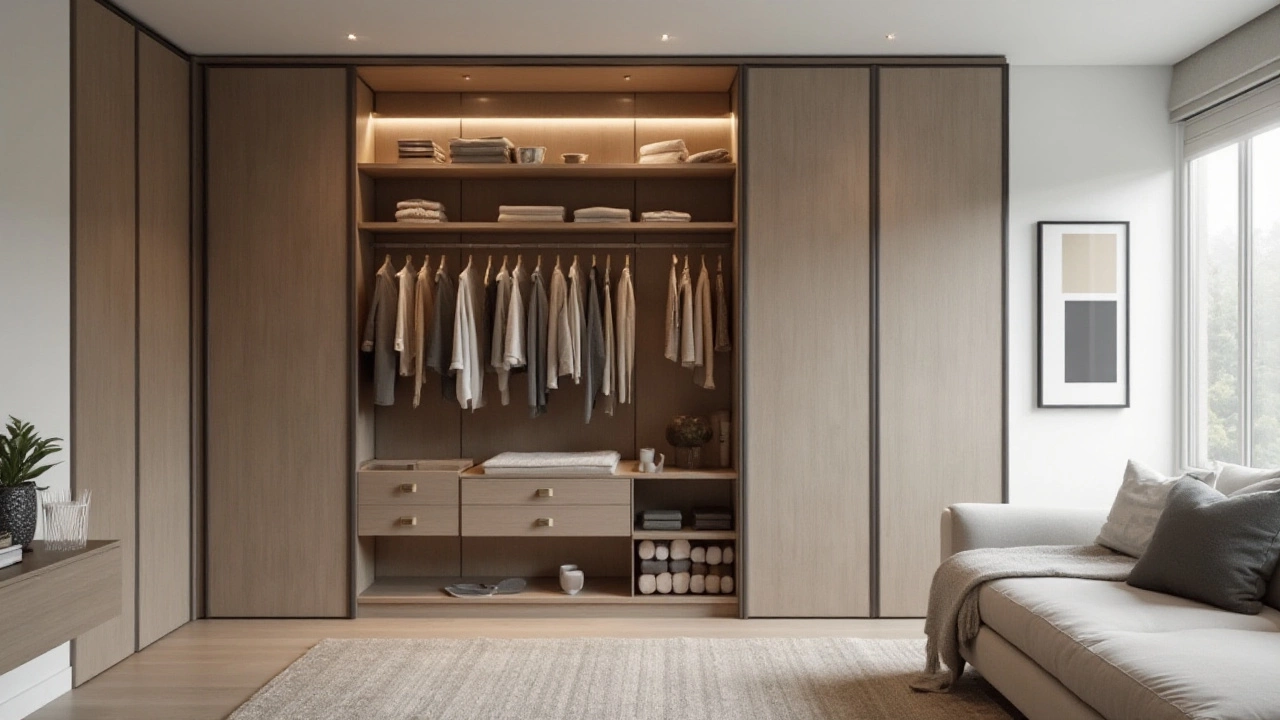
Functional Differences
When it comes to the functionality of wardrobes and closets, the main distinctions lie in their design, utility, and flexibility. Wardrobes are independent pieces of furniture that can be easily moved from one room to another, catering to those who value adaptability in their home layout. This makes them ideal for rented homes or spaces that might evolve over time. They come equipped with a wide range of internal configurations, including shelves, drawers, and hanging rails, allowing individuals to customize storage based on their specific needs. This adaptability means that wardrobes often appeal to those who enjoy redecorating frequently or live in environments where permanence is a luxury.
In contrast, closets tend to be more structurally integrated into the home's design. Because they are usually built into the architecture of the residence, they often provide a seamless look that complements the room's overall style. Closets are celebrated for maximizing space because they utilize integrated systems that allow for the efficient use of wall space without occupying additional floor area. For example, in a typical modern home, walk-in closets offer expansive storage solutions, complete with shelves for shoes, racks for clothing, and sections designed specifically for accessories like hats and bags. These systems often hold considerable appeal for those who prefer a more permanent solution to storing their wardrobe.
This section wouldn't be complete without addressing the matter of efficiency. Closets often outperform wardrobes when it comes to storing large quantities of items due to their size and built-in customization options. For homes with limited space, a closet might be a better choice because it leaves more of the room free for other uses. On the other hand, an elegantly designed wardrobe can act as a focal point of a room, adding an element of style and class not easily achieved with a simple closet. According to Interior Design Magazine, "The right furniture not only holds your belongings—it helps create an atmosphere of order and elegance that uplifts the entire room."
A crucial aspect of choosing between wardrobes and closets also involves understanding who will use them and what they will store. Families, for instance, might find that larger, customized closets better support their diverse storage needs, from clothing and toys to seasonal items and rarely-used heirlooms. Couples or single individuals might lean more towards wardrobes if flexibility and personalization are at the top of their list. To provide a clearer picture, let's take a look at a basic comparison in a table format:
| Feature | Wardrobes | Closets |
|---|---|---|
| Customizability | High, often modular and reconfigurable | Moderate to High, can require professional installation |
| Portability | Portable | Non-portable; built-in |
| Space Usage | Occupies floor space | Utilizes wall space |
As evidenced, each has its own set of characteristics that might appeal to different homeowners based on their needs and lifestyle preferences. Choosing between a wardrobe and a closet isn't just about space management; it's about how these essentials fit into the rhythm of daily life.
Design and Style Considerations
In the world of interior design, the choice between a wardrobe and a closet isn't only about functionality; it's a storytelling tool. The aesthetic elements of these storage solutions can transform the feel of a space. For those leaning towards wardrobes, the design options are nearly limitless. They come in an array of materials—from opulent oak to sleek metal—that can harmonize with, or boldly contrast against, the rest of the room’s decor. A mahogany wardrobe might lend an air of timeless elegance, whereas a modernist metal piece might sing the praise of industrial chic. The flexibility wardrobes offer, allowing them to be moved and adjusted as the taste and needs of the owner change, is a key factor to consider when decorating a transitional or eclectic space.
Closets, in contrast, present a different canvas for style. As built-in fixtures, their style mandates are subtler but no less impactful. The challenge and the delight of closet design lie in the details—the door style, the handles, and the finishes all contribute to this. A classic bi-fold door might suit a vintage-loving homeowner, while sleek, handleless sliding doors offer a clean, contemporary appeal. Investing time in selecting the interior design of a closet, such as lighting and shelving arrangements, can enhance utility and aesthetics. Interior lighting, such as a soft strip of LED, can elevate both the functionality and style quotient of a closet.
The popular trend towards space-saving features in closets has birthed innovative solutions that maximize storage efficiency without sacrificing style. Integrating pull-out racks, multi-level shelving, and concealed drawers can provide extensive storage capacity while maintaining a sleek exterior. For many, these efficient storage hacks turn a simple closet into a personalized nook of organization and elegance. Additionally, the eco-friendly angle cannot be ignored. Choosing sustainably sourced materials and low-VOC finishes can add a layer of responsible luxury to your storage solution.
Engaging with design trends such as these requires careful thought and planning. According to a recent study by Interior Design Magazine, “82% of homeowners agree that investing in smart storage solutions has improved overall home aesthetics and reduced clutter.” This shows that awareness and intentional selection of design features can significantly enhance the living experience. Ultimately, the selection of a wardrobe or closet should reflect personal style while providing functional storage.
The choice between a closet and a wardrobe should be dictated by both practical and aesthetic considerations. It's about integrating beauty, personality, and function into a living space that isn’t just about storing clothes but about creating a harmonious environment. The careful blend of style and necessity in the design of wardrobes and closets is what turns a house into a house with a sophisticated, individualized touch.
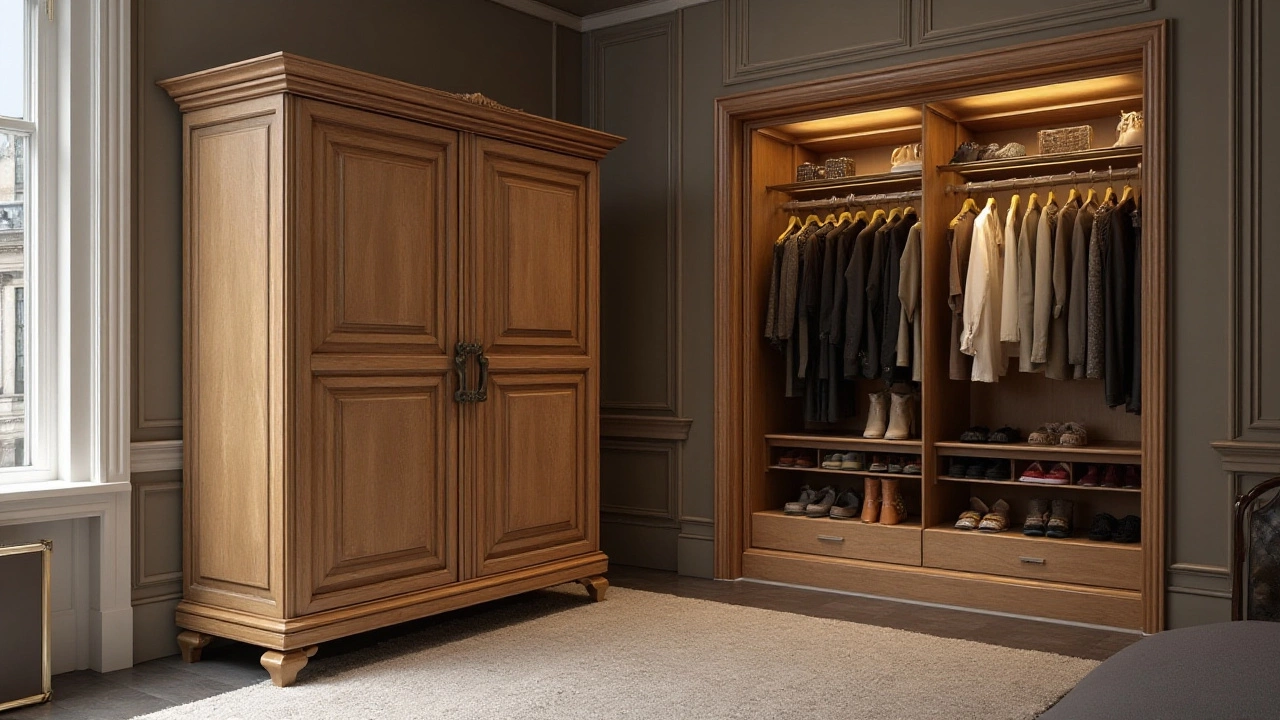
Choosing the Right Option for Your Home
Deciding between a wardrobe and a closet depends greatly on individual needs, space availability, and personal preference. For homes with limited space, a wardrobe might be the more viable option. Wardrobes can fit into any room and are easily relocatable, making them ideal for renters who move frequently or those who appreciate redecorating often. On the other hand, if you're someone who prefers a seamless, built-in look that maximizes wall space, a closet might be your best bet. Closets, with their intrinsic ability to construct shelves and racks, provide more flexibility for customization, especially for those with an extensive wardrobe collection.
In older homes or apartments, often characterized by their exceptional architectural charm, wardrobes hold an enduring appeal. These homes may not have the built-in closets that are prevalent in modern construction, making wardrobes a necessity rather than a choice. The versatility of a wardrobe allows homeowners to select styles and finishes that match the existing home décor while also serving as a statement piece. However, built-in closets, with their sleek lines and cohesive design, may be more fitting for modern or minimalist interiors. With a closet, you can enjoy a tidier-looking room as all clothes and accessories are hidden from view, contributing to an uncluttered space.
Consider your typical usage patterns—are you someone who appreciates having their clothes on display for easy outfit selection, or do you prefer a more concealed approach? That will determinedly guide your decision. Depending on your lifestyle, a closet may boast more advantages if you require well-organized spaces such as shoe racks, tie holders, or accessory drawers. In addition, closets often take advantage of vertical space more efficiently, allowing for more storage opportunities in a smaller footprint. Wardrobes, equally, come with their variety of organizational systems ranging from hanging rods and drawers to customizable shelves, which can be strategically arranged to optimize utility based on personal habits.
Budget Considerations and Installation
When making the decision between a wardrobe and a closet, it is critical to consider budget constraints. Wardrobes are usually less expensive and simpler to install since they require no construction work aside from assembly if they're flat-packed. This makes them a great short-term solution or for those on a tight budget. Remodeling a room to include closets, especially if they don't already exist, can be a significant investment that may enhance property value in the long run. However, this option may be more suited to homeowners rather than those renting their living spaces. As noted by
Home Design Magazine, "Investing in built-in storage solutions can potentially increase the functionality and value of your home, making it a wise long-term investment."
To wrap up, here’s a quick guide to help make your choice:
- If you value mobility and frequent style changes, consider a wardrobe.
- When space-saving and aesthetics are a priority, a closet with sliding doors might be ideal.
- For classical or eclectic interior styles, ornate wardrobes can become a centerpiece.
- In minimalist home designs, integrated closets enhance the serene, clutter-free ambiance.
Ultimately, the choice between a wardrobe and a closet should reflect your personal lifestyle, aesthetic values, and structural considerations specific to your home. Both pieces offer unique benefits, allowing you to create a living space that best aligns with your preferences and daily needs.
